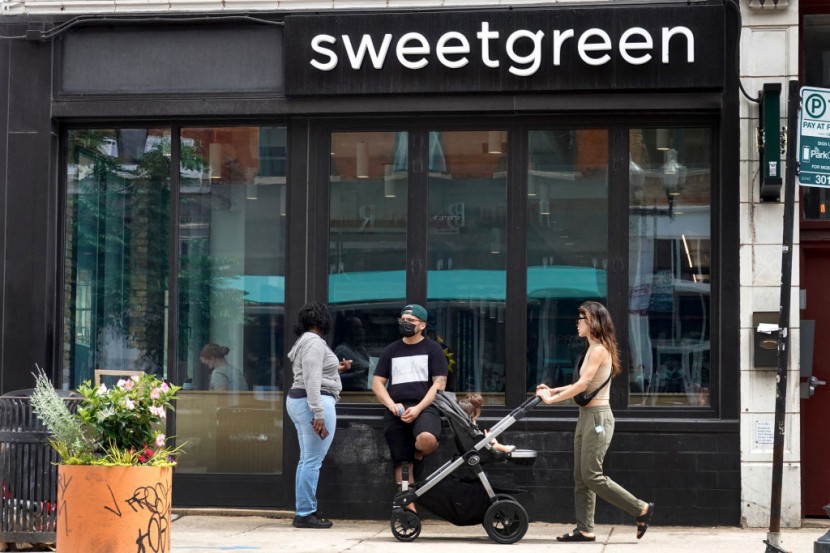
(Photo: by Scott Olson/Getty Images) CHICAGO, ILLINOIS - JUNE 21: A sign hangs above a Sweetgreen restaurant on June 21, 2021, in Chicago, Illinois. The salad chain said on Monday it had confidentially filed for an initial public offering in the United States.
In place of actual salad makers, a proprietary robot performs the majority of the labor at a Sweetgreen "Infinite Kitchen" restaurant in Naperville, Illinois.
After purchasing robotic kitchen company Spyce to streamline operations, Sweetgreen started testing the technology in May, according to CBS News.
Automation is being tested by other fast food and fast casual restaurant brands as well. Similar systems have been tested by Chipotle and White Castle.
At Sweetgreen, a robot shoots salad ingredients into a bowl that travels on a conveyor belt while other ingredients are added, the salad is prepared, and it is shaken.
Additionally, Sweetgreen is using the technology to produce salads more quickly and efficiently. The "Infinite Kitchen" technology will be incorporated into any new Sweetgreen restaurants that are launched.
Customers may submit their orders via a screen at a restaurant or online with the Sweetgreen system, which then spins the ingredients in bowls to mix them. Then the workers add more items, such as avocado.
Without the robot, seven to nine employees are required to assemble salads during a typical lunch rush. One to two humans are required to operate Sweetgreen's robot, according to the Journal.
Increasing Efficiency
According to the Journal, restaurants are constantly looking for ways to increase efficiency since food, labor, and other expenditures continue to be expensive. To increase productivity, several restaurants have experimented with automation and design.
In order to automate the production of bowls and salads on the line, Chipotle recently teamed with Hyphen, a food service platform devoted to automating kitchen operations.
Digital ordering systems direct orders for bowls or salads to the Hyphen system, which will assemble the bowl by moving the container along the line and adding ingredients.
Read also: Gundam in Real Life: Japanese Startup Builds Rideable Robot With $3 Million Price Tag
The Emergence of Robots
Robots are increasingly taking center stage as they begin to play a more prominent role in dining establishments. This innovation marks a response to various challenges faced by the restaurant sector, including labor shortages and heightened hygiene concerns due to the ongoing pandemic.
Across the country, several restaurants have started deploying robots to perform various tasks, such as taking orders, delivering food, and even preparing dishes. Notable fast-food chains and smaller eateries alike have embraced automation to improve efficiency and maintain consistent service.
While this trend is undoubtedly transformative, it raises important questions about the impact on the restaurant job market and how consumers perceive this technological shift. It simultaneously sparks critical discussions about its potential ramifications.
The primary concerns revolve around the impact on the job market, particularly in an industry that has traditionally been a significant source of employment. The successful integration of robots in restaurants underscores the industry's determination to adapt and thrive amid a rapidly changing landscape.
Related article: Japan Turns to Robot Wolves to Combat Bear Attacks








